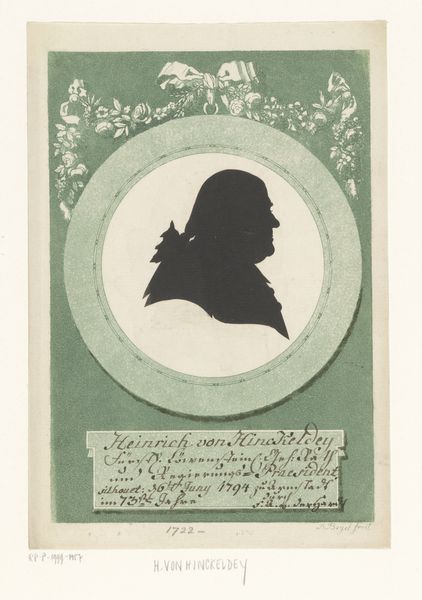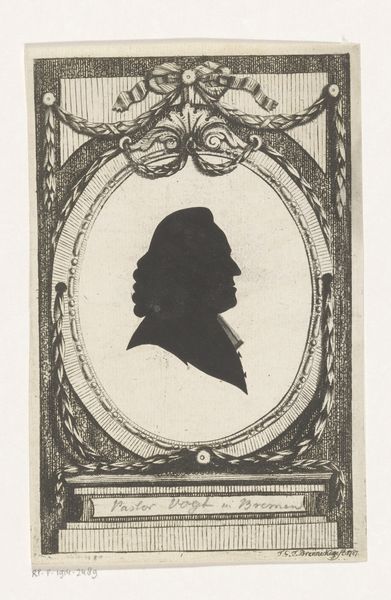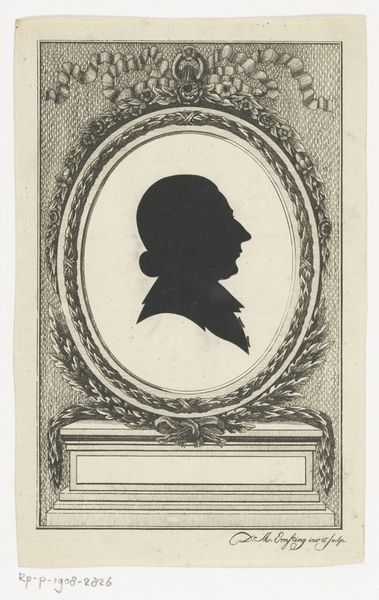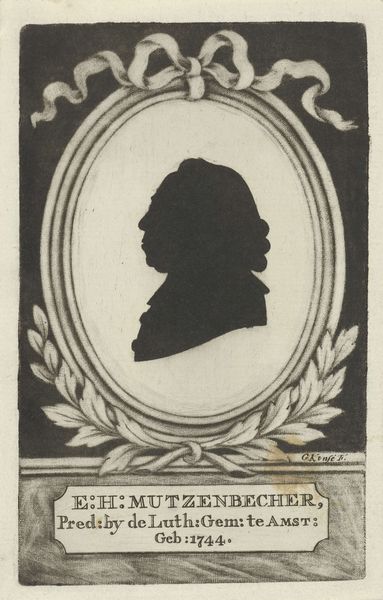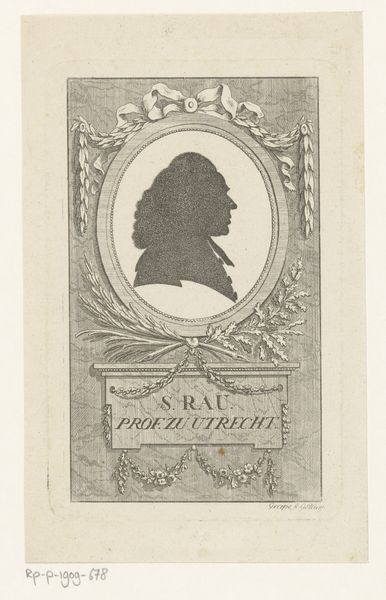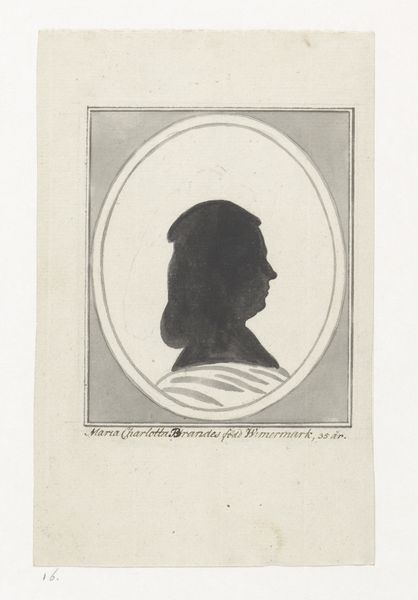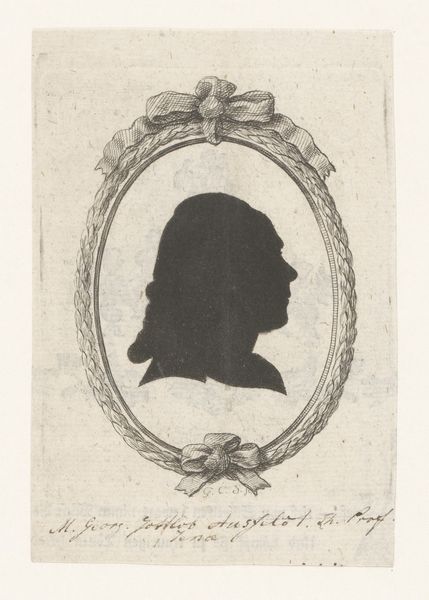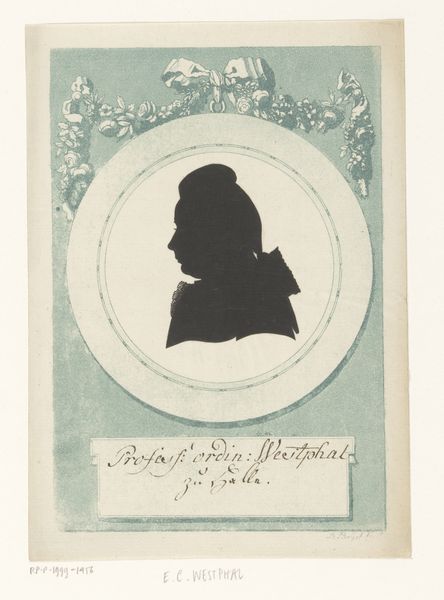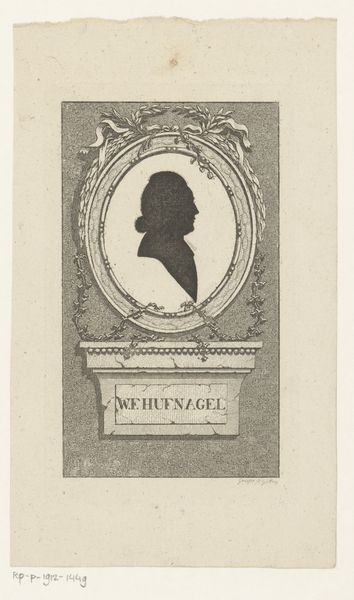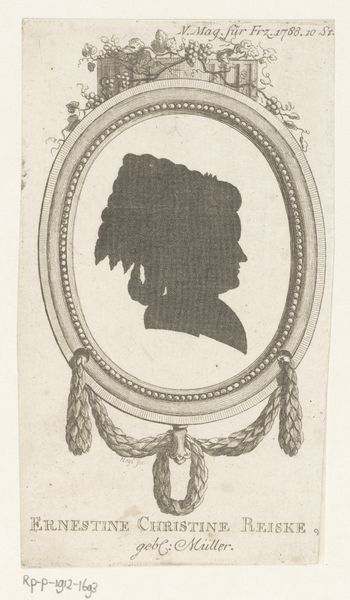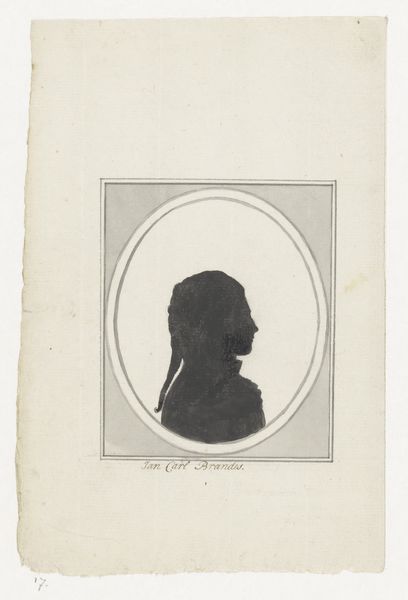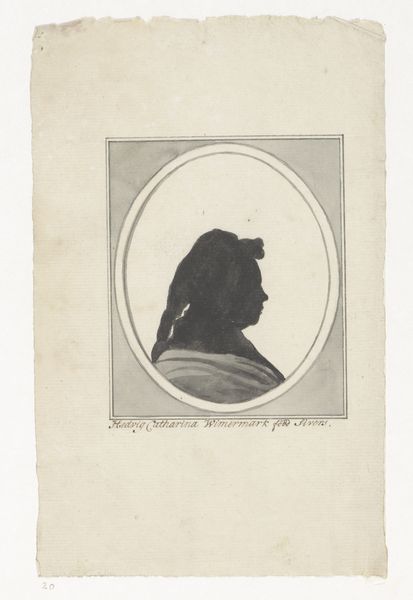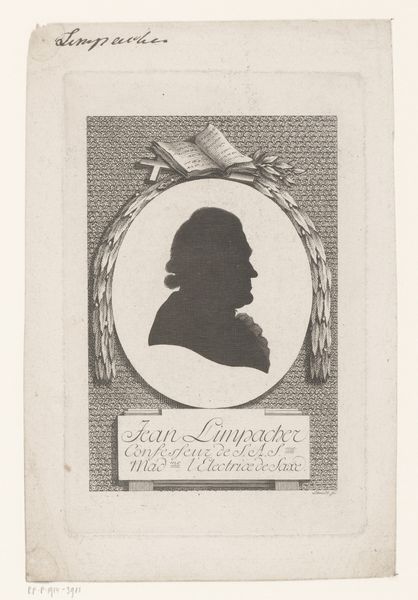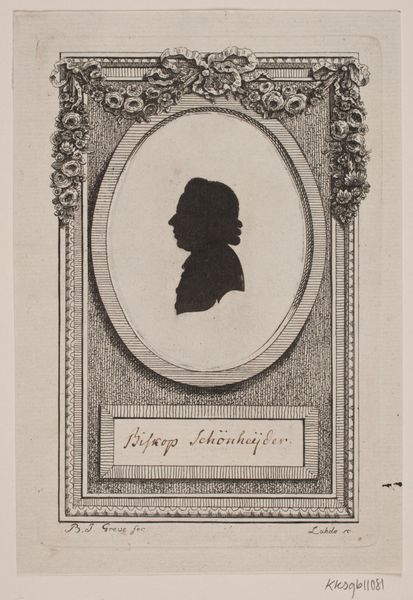
drawing, print, engraving
#
portrait
#
drawing
#
neoclacissism
# print
#
old engraving style
#
engraving
Dimensions: height 130 mm, width 78 mm
Copyright: Rijks Museum: Open Domain
This portrait of Dietrich Tiedemann was made by Georg Vogel, likely around the turn of the 19th century, using an engraving technique. Engraving is an intaglio process, meaning the image is incised into a plate, usually copper, using a tool called a burin. The artist would have used the burin to cut lines into the metal, creating a network of grooves that hold ink. The plate is then inked, the surface wiped clean, and the image transferred to paper under high pressure. The result is a crisp, precise image with a distinctive, slightly raised quality. Engraving was a highly skilled and labor-intensive process, often used for reproducing images and creating detailed illustrations. Its prevalence speaks to the rise of print culture during this period, enabling wider access to images and information. The fine lines and tonal variations achieved through engraving allowed for a high degree of realism, making it a popular choice for portraiture and other representational subjects. Consider the level of skill needed to achieve such refinement. Thinking about materials, making, and context allows us to fully understand the artwork, bridging the gap between fine art and craft.
Comments
No comments
Be the first to comment and join the conversation on the ultimate creative platform.
